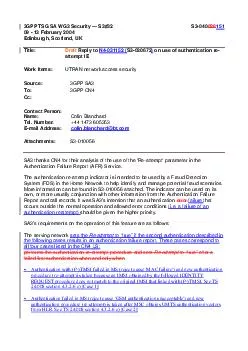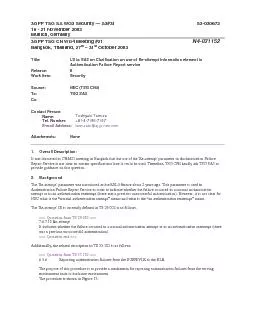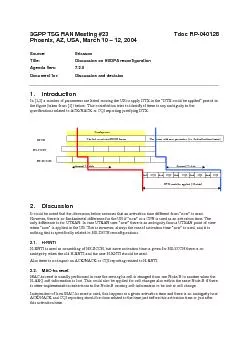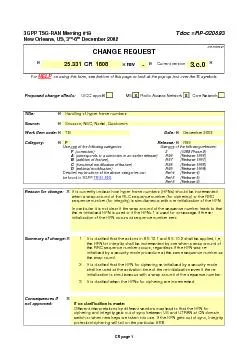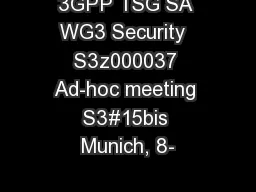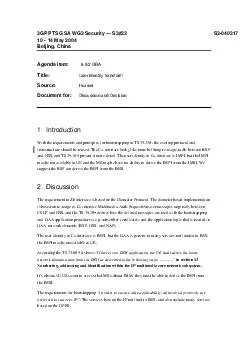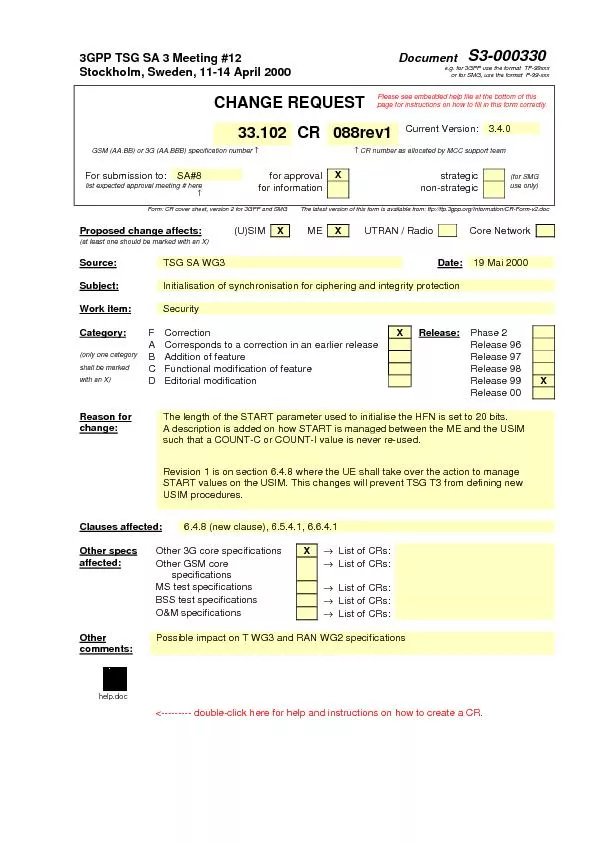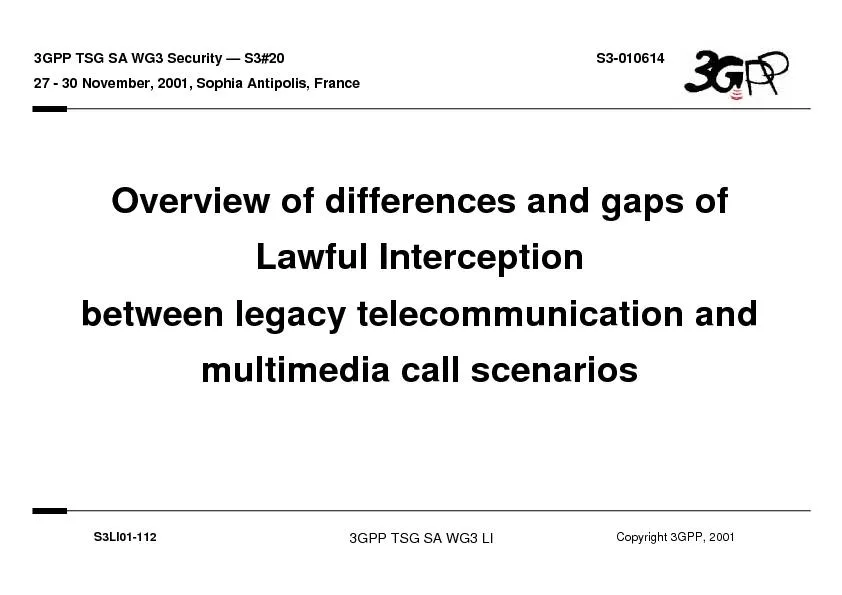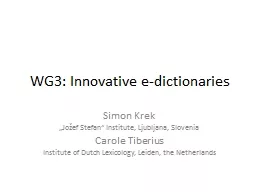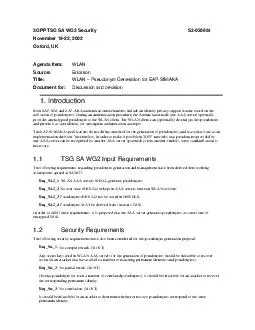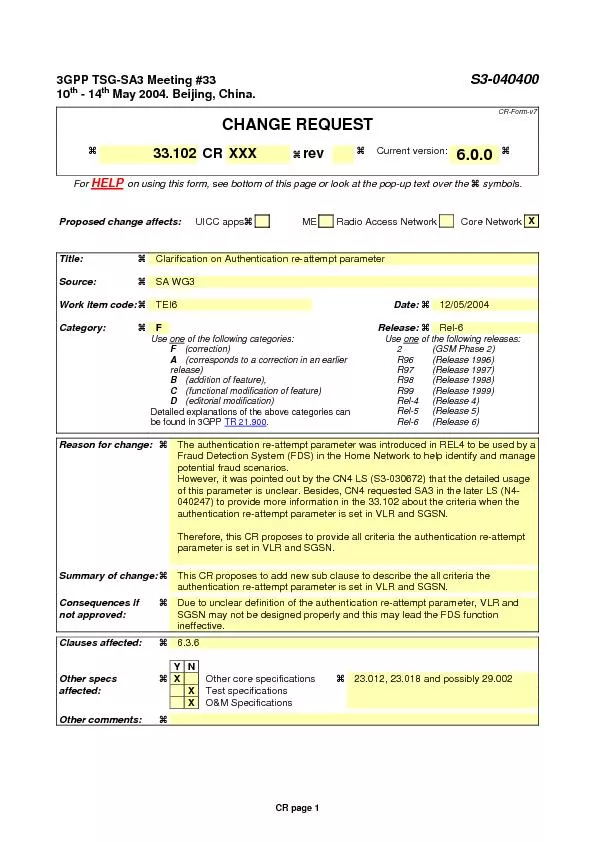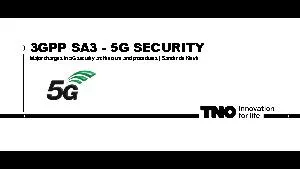PDF-3GPP TSG SA WG3 Security
Author : lois-ondreau | Published Date : 2015-10-05
151 09 13 February 2004 Edinburgh Scotland UK Draft Reply to N4031152 S3030672 on use of authentication re attempt IEWork Items Attachments SA3 thanks CN4 for
Presentation Embed Code
Download Presentation
Download Presentation The PPT/PDF document "3GPP TSG SA WG3 Security " is the property of its rightful owner. Permission is granted to download and print the materials on this website for personal, non-commercial use only, and to display it on your personal computer provided you do not modify the materials and that you retain all copyright notices contained in the materials. By downloading content from our website, you accept the terms of this agreement.
3GPP TSG SA WG3 Security : Transcript
Download Rules Of Document
"3GPP TSG SA WG3 Security "The content belongs to its owner. You may download and print it for personal use, without modification, and keep all copyright notices. By downloading, you agree to these terms.
Related Documents

